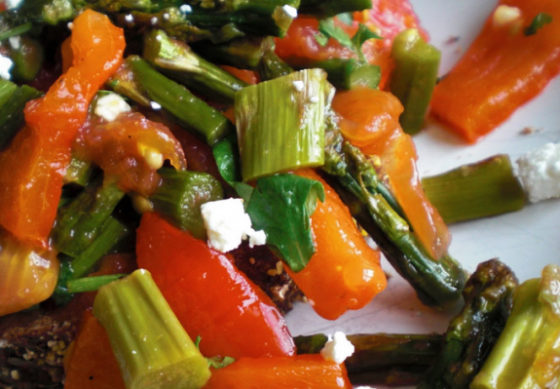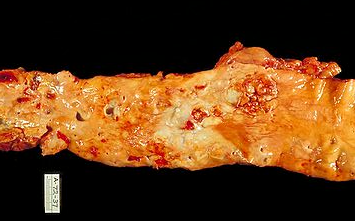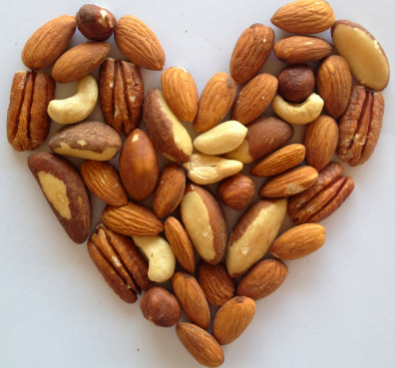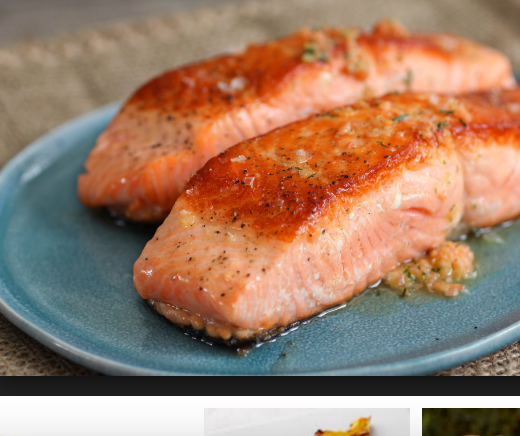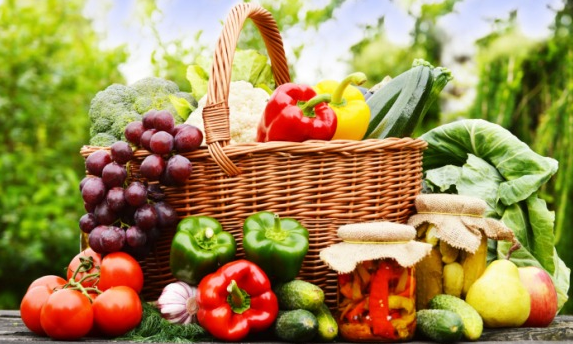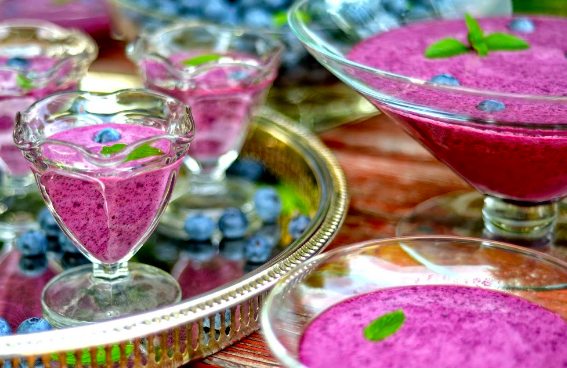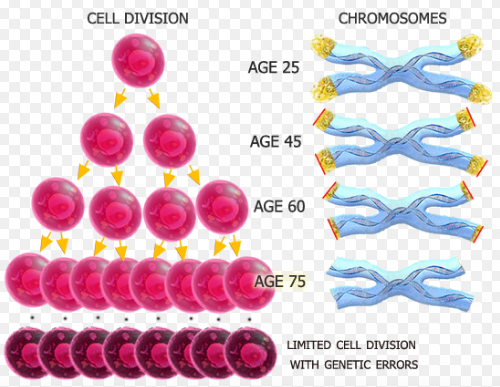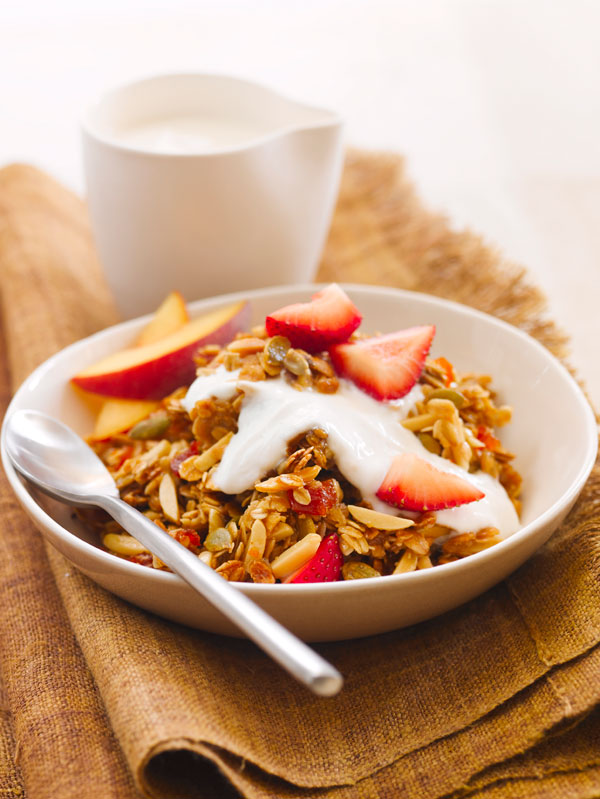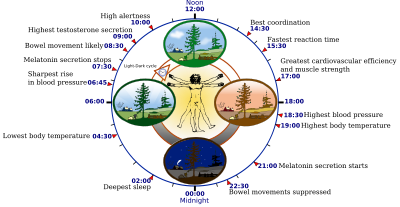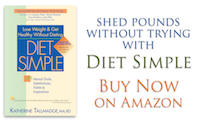My Favorite Asparagus Recipes
Spring has always seemed more like the new year to me than January first. Perhaps my inspiration comes from longer, warmer, sunlit days, delicate vegetables and fruits, like asparagus and strawberries, finally popping up, flowers blooming everywhere. Neighbors begin venturing out of winter hibernation with their first happy greetings of the year, with sounds of their children playing in the street. Celebrations are occurring all over the city showing off our beauty and splendor to the tourists. In fact, I think I’ll make my New Year’s Resolution today! And it’ll be easy – preparing batches of veggie salads – or soups, at least weekly, to help me and my friends shed some of our winter “padding.” Making delicious veggies your main course at dinners (lunches, too) helps manage your weight easily. Asparagus is one of my major harbingers of spring. Here I’d like to share some of my favorite asparagus recipes excerpted from my book, Diet Simple Farm to Table Recipes: 50 New Reasons to Cook In Season!, where you’ll find dozens of other seasonal recipes:
Chilled Asparagus in a Creamy Tarragon, Shallot and Roasted Walnut Vinaigrette
Salad of New Potatoes and Asparagus with Lemony Garlic Herb Mayonnaise
Pasta with Pesto, Roasted Asparagus and Cherry Tomatoes
Asparagus Salad in a Vietnamese-Style Dressing
Is Butter Good For You?
- At April 10, 2017
- By Katherine
- In Articles, News
 0
0
Butter is Back! And it’s even good for you? These declarations can be illustrated by the dizzying array of delicious butters now available: besides the old-fashioned American butters, you can easily find the extra rich Irish and French Butters, and a variety of premium, grass-fed, and organic farmers market butters extolled for their superiority, and with a premium price tag to match. Is this a food lover’s dream come true? Even some nutritionists have joined the bandwagon, and yours truly has been confused.
This seemingly good news may have started with the widely read earth shattering 2002 New York Times Magazine story, “What if it’s All Been a Big Fat Lie?” by Gary Taubes, featuring a big, fat, juicy piece of steak on the cover. More recently, Mark Bitman wrote a 2014 New York Times story covering a scientific study in the March 2014 Annals of Internal Medicine journal concluding that eating saturated fat, the so-called artery-clogging, demonic fat in butter, did not raise a person’s risk of heart disease. This exciting news, covered in just about every print and broadcast media outlet around the world, seemed to reverse decades of medical advice saying the opposite was true.
So, how do we hash out the truth?
This is an important question as one in every four deaths of Americans are from heart disease, so it’s a critical issue concerning the health of the majority of Americans – and my clients, who rely on me to get it right. After all, what’s more important than your health?
Upon exhaustive research, I’ve found the answer, interestingly, is not too different than conclusions made by Harvard scientist, Ancel Keys, and other respected scientists in the 1950s, 60s, and 70s: that the type of fat – not total fat – is responsible for the rise in heart disease because of its affect on blood cholesterol levels.
But how important is blood cholesterol level? A multitude of factors increase heart disease risk, such as calcification, inflammation, blood pressure, high triglycerides, diabetes, obesity, inactivity, smoking, family history, gender, and age. But, apparently, the correlation between high LDL(bad) cholesterol levels and heart disease has been well established and is still deemed significant to your risk of heart disease and your health. Conclusion: Keep LDL low (under 100) and HDL high (Over 40) to prevent heart disease risk.
And the most recent clinical study – the gold standard of scientific studies – has confirmed the worst (if you’re a butter lover, that is): Replacing the saturated fat in butter with unsaturated oils, not only raises HDL (good) cholesterol – which clears fat and reduces placque in the arteries – using oils instead of butter also reduces artery-clogging LDL (bad) cholesterol from the bloodstream. Conclusion: Use oil instead of butter to reduce heart disease risk. So, it seems the advice hasn’t changed since Ancel Keys discovered the superior health of Mediterraneans who used oil instead of butter.
In a recent Harvard School of Public Health’s analysis of the controversy, the scientists review decades of research showing the successful reduction in heart disease risk by doing things like replacing butter (high in saturated fat) with oil, replacing steak with salmon, and eating a plant-based diet based on fruits, vegetables and whole grains for the reduction of LDL cholesterol, the increase in HDL cholesterol, the resulting effect on lowering heart disease risk, and improving your overall health. Conclusion: “Butter is not back!” said Harvard’s Walter Willett.
So, what about those New York Times articles? Well… Caveat Emptor! Don’t believe everything you read, and consider the source (be sure the information comes from a peer-reviewed, scientific journal, and compare it to other established science).
To say this Swede, raised on cream and butter, is disappointed, is an understatement! But I still use luxurious butter sparingly, when I deem necessary!
And it’s a relief to know that all these years, helping my hundreds of clients lower their LDL and raise their HDL cholesterol levels by substituting butter with healthy oils and other lifestyle changes has not been a waste! WHEW! No rioting necessary 🙂
The Top 5 Food Do’s & Don’t’s Affecting Heart Disease Risk
- At March 27, 2017
- By Katherine
- In Articles, News
 0
0
In 2012, 45.4% of all heart disease deaths could be attributed to inadequate intake of certain foods, according to a recently published study in the Journal of the American Medical Association.
We’ve known for decades that what you eat significantly affects heart disease risk factors such as high blood pressure, high cholesterol, hemorrhages, diabetes, and inflammation. These results were based on a variety of different kinds of studies – epidemiologic, prospective, and clinical trials – set out to quantify the effect of specific foods on heart disease deaths.
The Intake of These Top 5 Foods, In Order of Predominance, Affect Your Heart Most Dramatically
1. High Sodium: Sodium, usually eaten in the form of salt, which is half sodium, pulls fluid into your blood vessels. This extra fluid increases the force of the blood against artery walls, reducing the flow of blood to your organs, making it harder for your heart to pump the blood efficiently, and damaging your heart. This excess force (or “pressure”) stresses the artery walls, potentially causing tears, blood clots, aneurysms and strokes. The recommendation is to take in less than 2,300 mg daily. Most Americans eat at least double that.
2. Low Nuts and Seeds: Epidemiological studies have found for decades that nut and seed eaters around the world have fewer heart attacks. The oil in nuts contains nutrients which seem to have a positive impact on heart function and increases good cholesterol, which helps prevent bad cholesterol from clogging the arteries. Also, studies show nuts and seeds help keep body weight down, a major risk factor for heart disease. Eat 2 ounces per day for maximum effect.
3. High Processed Meats: Processed meats such as hot dogs, bacon, sausage, bologna and ham are a major sodium source. They’re also usually high in saturated fats, which increase bad cholesterol. Since they are the highest dietary factor correlated with cancer, this gives you another reason to minimize processed meats. But when on the occasions that you might eat them, to minimize potential damage, pair with foods high in potassium and antioxidants, such as fruits and vegetables. Potassium and antioxidants may help neutralize the effects of sodium and the chemicals used in meat processing.
4. Low Omega-3-Fatty Acid Fish: Omega-3-Fatty Acids help prevent heart disease in many ways. They prevent irregular heart beat, reduce fatty placques inside artery walls, decrease blood clotting, tryglycerides (blood fats), increase good cholesterol and decrease inflammation. The American Heart Association recommends eating about 12 ounces of fatty fish weekly.
5. Low Fruit and Vegetables: Fruits and vegetables have many qualities responsible for the reduction of heart disease risk. They are high in potassium, which helps neutralize the effect of sodium on blood volume by pulling fluid from the arteries, reducing the blood’s pressure on the artery walls. They are high in water content, which studies show helps you feel more full with fewer calories, thus aiding weight loss (high body fat is the primary controllable risk factor for heart disease). Health authorities at the National Institutes of Health, and the U.S. Dietary Guidelines recommend 5 cups of fruits and/or vegetables daily. They should comprise at least half of the volume on your plates.
Blueberry Soup Fuels Bikers at the House of Sweden
- At March 26, 2017
- By Katherine
- In Articles, News
 0
0
On Sunday, March 19, the House of Sweden hosted the Washington Area Bicyclists Association for their 15th annual Vasa Ride. This lively WABA tribute to the renound annual 90 K Swedish Vasaloppet Cross Country Ski Race, uses bicycles instead.
Sunday’s bike ride, though, was a kinder and gentler version of the Swedish ski race, which is a tribute to the founding of a free Sweden. The first Swedish “Vasaloppet” was carried out in 1521 by Gustav Eriksson when he led occupation forces in an uprising against Danish rule from the town, Salen. This resulted in Eriksson, better known as Gustav Vasa, becoming a free Sweden’s first King and Vasaloppet’s namesake. But it wasn’t until 1922 that this endurance race was established and held its first run, also starting in Salen, with 136 skiiers, and took 7 hours, 32 minutes and 49 seconds in sleet and snow for the victor.
This year’s March 4, 2017 Vasaloppet registered 15,800 participants from 43 nations, and is the largest and longest ski race in the world. The winner, Norwegian John Kristian Dahl, won the race after 4 hours and 8 minutes.
Several years ago, the Swedish Embassy and WABA got together to create the annual Vasa Ride, with bikes, since D.C. doesn’t usually have enough snow for a 90 km cross country ski race. The Vasa Ride has four levels of riders who choose to ride for either 59, 31, 16 or 8 miles. On March 29, the House of Sweden, as usual, was a beautiful, light-filled respite from the cold, long ride. The Swedes generously provided the home base and refreshments, including the traditional Vasaloppet “Blueberry Soup,” though the American bikers’ consumption paled in comparison to almost a liter drunk by each skiier in the real Vasaloppet.
“The blueberry soup was warm and filling after the cold 30 mile ride, and it tastes better than I thought it would,” said Robert Bernstein, a WABA member who came from Ellicott City, Maryland.
The Swedish Embassy’s Air Force Attache, Per Danielson, coordinated the Swedish Embassy’s hosting his second year in a row. Danielson was a Swedish exchange student living in Richmond thirty years ago. And with this former exchange student leading, current Swedish exchange student volunteers served blueberry soup at Sunday’s event.
“It’s often the first ride of the year for Washington area cyclists, and is a fundraiser for WABA,” said Nick Russo, WABA’s Events Coordinator. WABA’s mission is “to create a healthy, more livable region by promoting bicycling for fun, fitness, and affordable transportation; advocating for better bicycling conditions and transportation choices for a healthier environment; and educating children, adults, and motorists about safe bicycling,”
Nuts & Seeds Reduce Signs of Aging by Increasing Telomere Length
- At March 11, 2017
- By Katherine
- In Articles, News
 0
0
Nuts and seeds improve signs of biological aging by increasing telomere length. Telomeres, proteins found at the end of each chromosome (think of the plastic protector at the ends of shoe laces), preserve information in our genome and prevent cell death; they serve as a biological clock to determine the lifespan of a cell and an organism. Telomere length shortens with age and can be affected by various lifestyle factors. Shorter telomeres are associated with lower rates of survival and higher rates of disease such as heart disease, cancer, diabetes and osteoporosis.
“Older people with shorter telomeres have three and eight times increased risk to die from heart and infectious diseases, respectively. Rate of telomere shortening is therefore critical to an individual’s health and pace of aging. Smoking, exposure to pollution, a lack of physical activity, obesity, stress, and an unhealthy diet increase oxidative burden and the rate of telomere shortening” according to a National Institutes of Health Review.
A new study found that “nuts and seeds intake was positively and linearly associated with telomere length.” After analyzing DNA and telomere length of study participants, researchers found: “Adults of the same age had more than 1.5 years of reduced cell aging if they consumed 5% of their [calories] from nuts and seeds,” according to the study in The Journal of Nutrition, Health and Aging.
What does that mean for you? If your calories needs are average, and about 2,000 per day, and you would like 5% of your calories to come from nuts and/or seeds, eat about 1/2 ounce or 1/2 a handful per day – or more. I generally recommend an ounce a day for those of us watching our weight and at least 2 ounces a days for those who get to eat unlimited calories (2 ounces daily is associated with a significantly reduced risk for heart disease).
I sprinkle them on my oatmeal each morning! My recipe …
A New Recipe For Improving Seasonal Allergy Symptoms
- At March 06, 2017
- By Katherine
- In Articles, News
 0
0
My clients who suffer from seasonal allergies were hit hard this year – and earlier than usual. The warm February temperatures caused Washington’s flowering trees and shrubs to come out of their winter slumber gloriously. Our famed cherry trees and camellias are almost in full bloom. Even my hydrangeas’ buds are peaking out.
This beautiful display does not feel so beautiful for people with spring allergies. They often have symptoms, caused by the flowers’ pollen, which impact their quality of life: lack of sleep, reduced productivity at work or school, emotional stress and embarrassment…. and the medications designed to improve those symptoms, depending on the person, may be no better, and cause dry mouth, sleeplessness, and drowsiness. A new study set out to test if certain strains of beneficial probiotic bacteria would reduce symptoms and improve quality of life during allergy season for its sufferers.
The study, published in the American Journal of Clinical Nutrition, the first randomized, double blind, placebo-controlled trial – the gold standard of human research – testing this hypothesis, divided 178 allergy sufferers into two groups and tested them during spring allergy season for eight weeks. One group received the probiotic supplement*, the other received the placebo.
The study found the probiotic group experienced improved quality of life symptoms compared to the placebo group. That said, scientists are still working out which of the beneficial probiotic bacteria work best with individual allergens, when to start taking them, and which probiotic bacteria will react most positively with a person’s specific microbiota (the 100 million bacterial organisms in your digestive tract), as each person’s microbiota is different. They mentioned that starting probiotics at a younger age may be more effective, too.
In the meantime, I believe eating foods which naturally contain beneficial probiotic bacteria, such as yogurt, is the best solution for trying to reduce your allergy symptoms. In fact, I recommend eating yogurt every day! Though, I don’t recommend counting on supplements because, as of now, no probiotic supplements have passed the tests allowing them to make a health claim.
Here’s one of my favorite yogurt recipes developed by Georgetown resident, cookbook author, and my friend Najmieh Batmanglij, and found in my book, Diet Simple…
Najmieh Batmanglij’s Yogurt and Spinach Dip
*(Lactobacillus gasseri KS-13, Bifidobacterium bifidum G9-1, and Bifidobacterium longum MM-2 provided by Wakunaga of America Co Ltd)
Are you an “Apple” or a “Pear?” If you have the “Apple Shape,” You May Have a Higher Risk for Dementia
- At February 27, 2017
- By Katherine
- In Articles, News
 0
0
Having a “pear” or “apple” shape can determine the health of a woman’s body – and mind. Of course, Eve knew all about the troubles an apple could bring.
If you gain weight in your chest and belly, you have an apple shape. If your weight gain is in your hips and thighs, you’re a pear. Studies have long shown that if your body fat is concentrated primarily in the middle – like an apple, it is more biologically active and is correlated with health problems like heart disease, high blood pressure, diabetes and cancer.
This study, published in the Journal of the American Geriatrics Society found that as body weight increased in post-menopausal women, cognitive function decreased. But the worst cognitive decline occurred when high body weight was coupled with an apple shape compared to the pear shaped body fat distribution.
This troubling result seems to coincide with studies showing a higher risk of dementia in people with high blood pressure, heart disease or diabetes, the risk of which is heightened by having the apple-shaped body fat distribution.
If you’re overweight, you may still be healthy, as long as you’re physically active and eat healthfully. But if your excess weight is carried mostly around the middle, it would be wise to keep track of your health, especially your blood pressure, blood glucose and cholesterol, and lose weight so that your waist circumference* measures 35″ or less, which is what health authorities recommend for women (40″ or less for men).
*Your accurate waist circumference is measured at the level of your belly button (not the smallest part of your middle).
Vitamin D Boosts Muscle Strength, Power & Velocity While Lowering Body Fat
- At February 21, 2017
- By Katherine
- In Articles, News
 0
0
 A new study reports that Vitamin D effects certain genes which are involved in muscle and fat mass and function. This could mean there is an important yet simple solution to the natural decline of muscle as we age, which could have many benefits – decreasing disease, falls, broken bones, and subsequent hospital and nursing home stays.
A new study reports that Vitamin D effects certain genes which are involved in muscle and fat mass and function. This could mean there is an important yet simple solution to the natural decline of muscle as we age, which could have many benefits – decreasing disease, falls, broken bones, and subsequent hospital and nursing home stays.
As we age, muscle mass and strength decrease, to the point where our muscles actually become “marbled” with fat (think bacon!), reducing their ability to function and our ability to live independent lives, according to the National Institute on Aging. That’s because muscle mass is essential for movement, balance, and even immune function. So if we don’t strength train as older adults, we’re more likely to lose our independence and end up in nursing homes, creating a massive public health burden, according to the study published in the journal PLOS ONE, and partly funded by the National Institutes of Health.
That said, we’ve known for years, and I’ve written about, the importance of working out, eating the right amount of protein, carbohydrate and fat, eating an anti-inflammatory, anti-oxidative diet filled with plant nutrients like polyphenols, (found in tea, fruits & vegetables), and living a low stress life. But there are other factors which come into play that scientists are studying. One may be Vitamin D, the “sunshine vitamin.”
In the past several years, researchers are finding that Vitamin D may be instrumental in preventing diseases from colds, heart disease to cancer. Even multiple sclerosis, parkinson’s disease and insulin dependent diabetes. And now, Vitamin D seems to be correlated with an increase in muscle mass and a decrease in body fat. Yet the most needy population, the elderly, is usually deficient. That’s because Vitamin D is produced by being exposed to sunshine. Today, many of us don’t go outdoors and when we do we’re wearing sunscreen. That particularly pertains to the aging population, whose muscle mass can mean independence – or the loss of it.
How much Vitamin D does improving muscle mass require? What should your blood level be? Ask your doctor, but perhaps also share this recent data with him/her: “[The National Academy of Sciences’ Food and Nutrition Board’s] review of data suggests that persons are at risk of deficiency relative to bone health at serum 25OHD levels of below 30 nmol/L (12 ng/mL). Some, but not all, persons are potentially at risk for inadequacy at serum 25OHD levels between 30 and 50 nmol/L (12 and 20 ng/mL). Practically all persons are sufficient at serum 25OHD levels of at least 50 nmol/L (20 ng/mL). Serum 25OHD concentrations above 75 nmol/L (30 ng/mL) are not consistently associated with increased benefit.”
Most of us will need to get Vitamin D from a supplement because it’s in very few foods (egg yolks, salmon) and most of us don’t get enough sunlight. Again, ask your doctor about your personal situation. But, the latest recommendation from some Vitamin D researchers is 1,000 IU per day but up to 4,000 daily is safe (Vitamin D can be toxic at much higher levels)… This level is higher than the official National Academy of Sciences’ Food and Nutrition Board because they determine how much Vitamin D is needed to prevent rickets (a Vitamin D deficiency disease which softens the bones). They say the jury is still out as to how much is good for your overall health. The NAS scientists believe that more definitive research needs to be done to change their recommendation. In the meantime, it doesn’t hurt for healthy people to increase their vitamin D intake to up to 4,000 IU daily.
A New Diet Strategy for the New Year: Semi-Fasting
- At February 13, 2017
- By Katherine
- In Articles, News
 0
0
When it comes to dieting, I’ve heard everything, tried everything and studied everything. The challenge is always: How do you eat fewer calories than you need to lose weight and avoid starving? I’ve discovered in my 25+ years of practice that for weight loss to last, the diet must be enjoyable, flexible, healthy, and fit into busy lifestyles. That means fad diets or extremely strict or punishing diets are best avoided. The results just can’t last. And the studies back me up.
Instead, I’ve found certain personalized “strategies,” can really work for lasting results. One of my favorites right now is what I call a “semi-fast.” How it’s done depends on my clients’ lifestyle, abilities and preferences.
I used to believe that fasting was to be avoided as it lowers metabolism and could lead to bingeing. But new studies and my clients’ experiences have changed my opinion – 180 degrees. Nutrition and solving weight problems is a constantly evolving science and I’m always looking for easy ways for people to manage being at their ideal weight and be happy – and healthy, of course.
I first heard about the success of the “semi-fast” at an American Institute for Cancer Research conference. Cancer researchers are always looking for successful weight loss techniques since body fat is one of the most potent cancer risk factors. A British study divided women into two groups: One group was on a consistently low calorie plan. That is, they ate the same amount of calories daily, about 1,200. The other group ate more daily calories – say, 1,500 – but they cut their calorie intake in half twice a week. The study results were amazing. The group that fasted twice a week were more successful. They enjoyed their diet more, were more likely to stick with it, and achieve lasting results.
I always give my clients the option and we decide the best way to go about it together. One of the most successful ways is to fast in the evening. The way I recommend doing it is to eat about 2/3 of your calorie needs before the evening and then skip dinner, or stick with something very low calorie such as a veggies, yogurt or fruit. The two nights of fasting allows you to eat a more enjoyable diet, it can undo damage done during the week, and a growing body of evidence shows calorie restricting may reduce disease and extends life. There are many theories to explain this and one is that a lower metabolism causes less oxidation, cell proliferation (cancer), and decreases harmful chemicals and hormones in your body.
There have also been studies showing that eating most of your calories during the day and less at night is more likely to aid weight loss. One of the keys to the semi-fast is to find two nights when fasting would be easier. One of my clients fasts on nights her husband is traveling, when she isn’t faced with eating a full meal with him. Another has just decided that every Monday and Tuesday night she doesn’t eat – and she lost 50 pounds before her wedding and has kept it off.
I personally have used this strategy most of my adult life, before knowing about the studies. My motto since the 1980s has been “Light at Night,” and it works!
Meal Timing’s Influence on Weight Loss
- At October 03, 2016
- By Katherine
- In Articles, News
 0
0
I’ve written a lot about how factors beyond calories – such as meal size, balance, and timing – affect your ability to lose weight and improve your health. A new study in The American Journal of Clinical Nutrition confirms what I’ve observed during the 20-plus years of my personalized nutrition counseling practice. And that is, having your larger meal at dinner or at lunch can make the difference between losing and not losing weight, even if the same food – and the same calories – are eaten.
This clinical trial – the gold standard type of study, because it controls all conditions so it can determine a cause and effect – took 80 randomly assigned healthy overweight or obese women and fed one group a larger meal at lunch and a smaller meal at dinner for twelve weeks. The second group was given the opposite condition: a smaller meal at dinner and a larger meal at lunch.
The groups experienced significantly different results. While both groups lost weight, the small dinner group lost more weight. They also achieved a lower fasting insulin and improved insulin resistance, a precurser to diabetes. Your insulin level is important for your health. Higher insulin levels correlate with a higher rate of heart attack and colon cancer – and possibly other cancers – as it is considered a “growth factor,” which increases cellular proliferation in the body.
“Light at night” has been my mantra since I first started working with clients, though it was poo poo’d by so many of my colleagues and doctors through the years. Well, science is finally starting to catch up with my recomendations!

